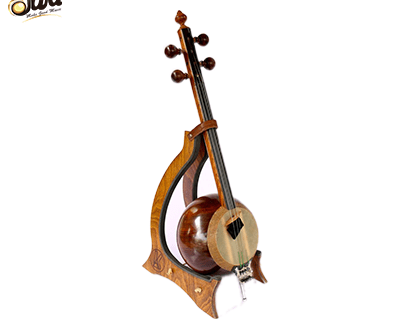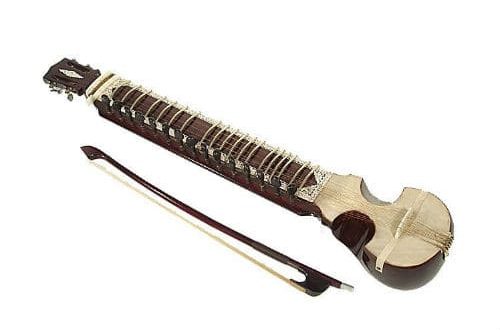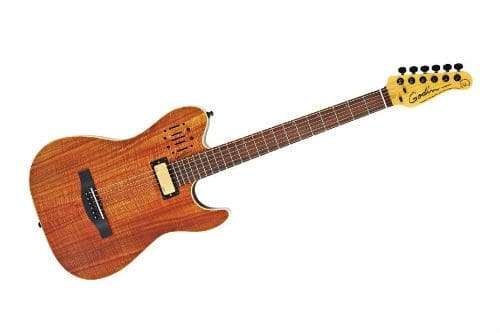
Rhythm guitar: instrument features, use, difference from solo and bass guitar
Rhythm guitar is a musical instrument designed to play rhythm parts in compositions. Usually rhythm parts sound against the background of solo instruments. Equipment like amps and effects pedals differs between a solo and a rhythm guitarist. If there is more than one guitarist in the band, they can change roles.
The electric version of the rhythm guitar has become very popular. Acoustics are commonly used in folk music and bluegrass.

How is it different from lead guitar and bass guitar
Rhythm guitar looks like a regular electric or acoustic guitar. The only difference from the solo guitar is the nature of the application. The rhythm guitar is responsible for creating the rhythmic pattern of the composition, while the solo guitar independently leads the main melody. If the group consists of one guitarist, then he can alternately play both parts on one instrument. Rhythm guitarists usually don’t use flangers to avoid interrupting the lead guitar.
The difference with the bass guitar is more significant. The design of the bass guitar is characterized by a long neck, increased fret spacing, the use of four thick strings and a low tuning. The rhythm guitarist usually plays several notes at a time, the bassist plays single notes. The bassist plays in harmony with the drummer and emphasizes the guitarists’ chord changes. Bass covers a lower range of sound than an electric guitar in any tuning.
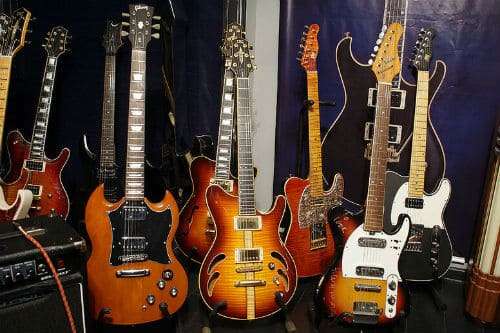
Using
Most rock and blues songs are played in 4/4 time. The time signature has 2 strong and weak beats. In rock and roll, rhythm guitar emphasizes downbeats.
In rock music, the usual way to build a chord progression is to play major and minor triads. Each triad consists of the root, third, and fifth notes of a particular scale. For example, the C major triad includes the notes C, E and G. Sometimes chords with 4 notes can be inserted, adding one more to the three.
The three-chord progression is a typical rhythm pattern in early pop and rock music. The I, IV and V chords of the blues square were played in this sequence.
In heavy metal music, rhythm guitarists usually play power chords. Alternative name – quints. Power chords consist of a root note and a fifth higher, or with an octave duplicating the root. A feature of quintchords is a clear and hard sound. Usually sounds with a distortion or overdrive effect applied.
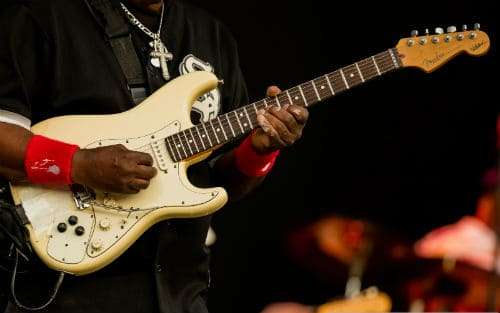
The availability of electronic effects allows rhythm guitarists to replace the synthesizer player. Effects pedals are used to change the sound. After applying the effect, the guitar sound may change beyond recognition. This approach to the rhythm section is common in modern pop music.
In jazz music, the banjo originally played the role of an accompanying instrument. In the 1930s rhythm guitar took over. The main advantage that rhythm guitarists had over banjo players was the ability to keep a steady rhythm over complex chord progressions. Early jazz guitarists like Freddie Green attempted to further exploit the instrument’s percussive qualities by striking the body rhythmically.
In the European jazz-manush genre, rhythm guitar replaces percussion instruments. To do this, guitarists use the “la pompe” playing technique. The right hand strikes the strings quickly up and down, and makes an additional downstroke, creating a rocking rhythm section.
Rhythm guitar plays a key role in reggae. It is she who emphasizes the genre-specific emphasis on beats 2 and 4 of the measure.




